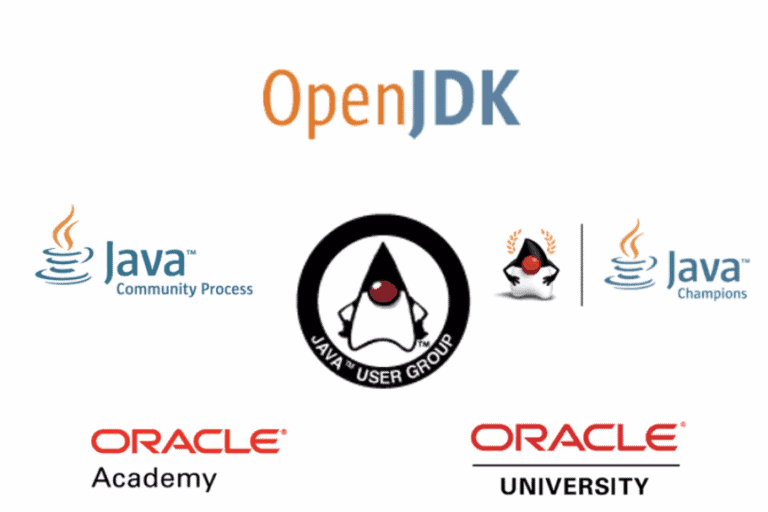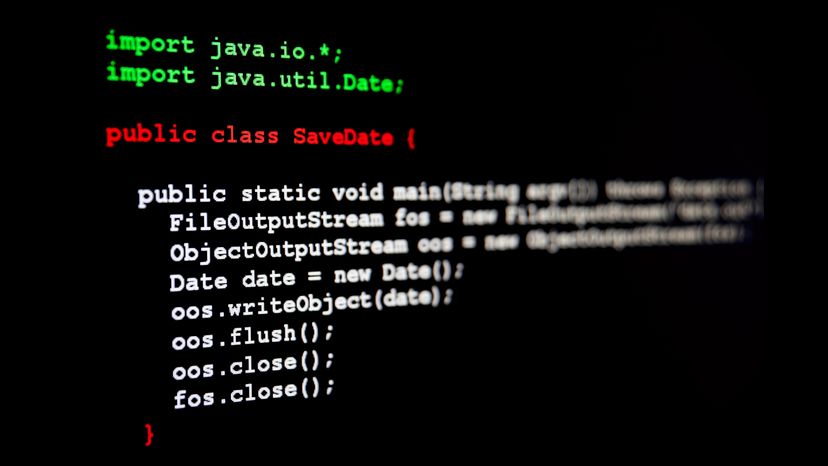The Evolving Landscape of Modern Java Development
The Java ecosystem is experiencing a renaissance. Gone are the days of slow, monolithic release cycles. With Oracle’s accelerated six-month release cadence, the platform is evolving faster than ever, bringing powerful new features that directly address the challenges of modern application development. From groundbreaking concurrency models to enhanced developer ergonomics, the latest Oracle Java news signals a clear focus on performance, scalability, and productivity. While many developers are still migrating from long-term support (LTS) versions like Java 8 news, Java 11 news, or Java 17 news, the features solidified in Java 21 news and beyond are setting the stage for the next generation of enterprise applications.
This article dives deep into the most impactful advancements, moving beyond theoretical discussions to provide practical, real-world examples. We’ll explore how innovations like Project Loom’s virtual threads and structured concurrency are revolutionizing how we handle I/O-bound operations, a cornerstone of most enterprise systems. Crucially, we will demonstrate how these new Java features integrate seamlessly with relational databases, using practical SQL code snippets to showcase their power in a familiar context. We’ll see how modern Java simplifies data access, enhances transaction management, and builds more resilient, performant systems, touching upon key areas like the JVM news, Spring Boot news, and the broader Java ecosystem news.
Section 1: The Concurrency Revolution with Project Loom
For years, Java’s concurrency model has been built on platform threads, which are thin wrappers around operating system threads. While powerful, they are a finite and heavyweight resource, making it challenging to scale applications that handle tens of thousands of concurrent I/O-bound tasks, such as database queries or microservice calls. The most significant piece of recent Java concurrency news is the full arrival of Project Loom, which introduces virtual threads.
Virtual threads are lightweight threads managed by the Java Virtual Machine (JVM), not the OS. Millions of them can be created, allowing for a simple, synchronous “thread-per-request” programming model that scales with incredible efficiency. This is a game-changer for applications using frameworks like Spring Boot and Hibernate, which are often bottlenecked by I/O. Let’s see how this applies to a common database scenario.
Practical Example: High-Throughput Data Service
Imagine a service that needs to handle thousands of simultaneous requests to fetch product information from a database. With traditional platform threads, you’d quickly exhaust your thread pool. With virtual threads, this becomes trivial.
First, let’s define a simple database schema for our products. This SQL can be used in an Oracle, PostgreSQL, or similar database.

-- DDL for creating the PRODUCTS table
CREATE TABLE products (
product_id NUMBER(10) PRIMARY KEY,
product_name VARCHAR2(255) NOT NULL,
description CLOB,
price NUMBER(10, 2) NOT NULL,
stock_quantity NUMBER(10) DEFAULT 0,
created_at TIMESTAMP DEFAULT SYSTIMESTAMP
);
-- Create an index for faster name lookups
CREATE INDEX idx_product_name ON products(product_name);
-- Insert some sample data
INSERT INTO products (product_id, product_name, description, price, stock_quantity)
VALUES (101, 'Quantum SSD 1TB', 'A high-speed solid-state drive.', 129.99, 500);
INSERT INTO products (product_id, product_name, description, price, stock_quantity)
VALUES (102, 'HyperCore CPU', 'A 16-core processor for demanding tasks.', 499.50, 250);
COMMIT;Now, let’s write a simple Java service using Spring Boot that leverages virtual threads to fetch this data. Spring Boot 3.2+ makes this incredibly easy with a simple configuration property.
import org.springframework.jdbc.core.simple.JdbcClient;
import org.springframework.stereotype.Service;
import javax.sql.DataSource;
import java.math.BigDecimal;
import java.util.Optional;
// Define a record to hold our product data, a modern alternative to boilerplate-heavy classes
public record Product(long id, String name, String description, BigDecimal price, int stock) {}
@Service
public class ProductService {
private final JdbcClient jdbcClient;
public ProductService(DataSource dataSource) {
this.jdbcClient = JdbcClient.create(dataSource);
}
// This method will be executed on a virtual thread by the web server
public Optional<Product> findProductById(long productId) {
// The thread is "parked" (not blocked) here while waiting for the DB,
// freeing the underlying OS thread for other work.
String sql = "SELECT product_id, product_name, description, price, stock_quantity FROM products WHERE product_id = ?";
return jdbcClient.sql(sql)
.param(productId)
.query((rs, rowNum) -> new Product(
rs.getLong("product_id"),
rs.getString("product_name"),
rs.getString("description"),
rs.getBigDecimal("price"),
rs.getInt("stock_quantity")
))
.optional();
}
}
/*
To enable virtual threads in Spring Boot, add this to your application.properties:
spring.threads.virtual.enabled=true
*/With a single configuration change, every incoming web request is now handled by a virtual thread. When `findProductById` makes a JDBC call, the virtual thread is suspended, and the underlying OS carrier thread is released to do other work. This is the core of the Java virtual threads news: achieving massive scalability with simple, easy-to-read blocking code.
Section 2: Coordinated Operations with Structured Concurrency
While virtual threads solve the “how many” problem of concurrency, Java structured concurrency news addresses the “how to manage” problem. In complex applications, it’s common to perform several related concurrent tasks. For example, when loading a user’s dashboard, you might need to fetch their profile, their recent orders, and their notifications simultaneously. Traditionally, this involved managing `Future` objects or `CompletableFuture` chains, which can become complex and error-prone. If one task fails, how do you reliably cancel the others?
Structured Concurrency, finalized in Java 21, introduces the `StructuredTaskScope` API. It treats a group of concurrent tasks as a single unit of work. If one subtask fails, the entire scope can be shut down, and other subtasks are automatically cancelled. This prevents resource leaks and simplifies error handling immensely.
Practical Example: Building a User Dashboard
Let’s expand our database schema to include users and orders. We want to fetch a user’s details and their order count concurrently.
-- DDL for USERS and ORDERS tables
CREATE TABLE users (
user_id NUMBER(10) PRIMARY KEY,
username VARCHAR2(100) NOT NULL UNIQUE,
email VARCHAR2(255) NOT NULL UNIQUE,
registration_date DATE
);
CREATE TABLE orders (
order_id NUMBER(10) PRIMARY KEY,
user_id NUMBER(10) REFERENCES users(user_id),
order_date TIMESTAMP,
total_amount NUMBER(12, 2)
);
-- Insert sample data
INSERT INTO users (user_id, username, email, registration_date)
VALUES (201, 'jane_doe', 'jane.doe@example.com', SYSDATE - 30);
INSERT INTO orders (order_id, user_id, order_date, total_amount)
VALUES (301, 201, SYSTIMESTAMP - 5, 99.99);
INSERT INTO orders (order_id, user_id, order_date, total_amount)
VALUES (302, 201, SYSTIMESTAMP - 2, 149.50);
COMMIT;Now, let’s use `StructuredTaskScope` to fetch the data for our dashboard. This example uses plain JDBC for clarity, but the principle is the same when using Hibernate or other ORMs.
import java.sql.*;
import java.time.LocalDate;
import java.util.concurrent.*;
// Records for our data structures
record UserProfile(long userId, String username, String email, LocalDate registrationDate) {}
record UserDashboard(UserProfile profile, long orderCount) {}
public class DashboardService {
private final DataSource dataSource;
public DashboardService(DataSource dataSource) {
this.dataSource = dataSource;
}
public UserDashboard getDashboard(long userId) throws InterruptedException, ExecutionException {
// Use a virtual thread executor for our concurrent tasks
try (var executor = Executors.newVirtualThreadPerTaskExecutor()) {
// StructuredTaskScope ensures that if one task fails, the other is cancelled.
try (var scope = new StructuredTaskScope.ShutdownOnFailure()) {
// Fork the first task: fetching the user profile
Future<UserProfile> userFuture = scope.fork(() -> fetchUserProfile(userId));
// Fork the second task: fetching the order count
Future<Long> orderCountFuture = scope.fork(() -> fetchOrderCount(userId));
// Wait for both to complete. If either throws an exception, join() will rethrow it.
scope.join();
scope.throwIfFailed(); // Propagate failure
// If both succeeded, get the results and combine them.
return new UserDashboard(userFuture.resultNow(), orderCountFuture.resultNow());
}
}
}
private UserProfile fetchUserProfile(long userId) throws SQLException {
try (Connection conn = dataSource.getConnection();
PreparedStatement stmt = conn.prepareStatement("SELECT * FROM users WHERE user_id = ?")) {
stmt.setLong(1, userId);
ResultSet rs = stmt.executeQuery();
if (rs.next()) {
return new UserProfile(
rs.getLong("user_id"),
rs.getString("username"),
rs.getString("email"),
rs.getDate("registration_date").toLocalDate()
);
}
throw new RuntimeException("User not found");
}
}
private Long fetchOrderCount(long userId) throws SQLException {
try (Connection conn = dataSource.getConnection();
PreparedStatement stmt = conn.prepareStatement("SELECT COUNT(*) FROM orders WHERE user_id = ?")) {
stmt.setLong(1, userId);
ResultSet rs = stmt.executeQuery();
if (rs.next()) {
return rs.getLong(1);
}
return 0L;
}
}
}This code is robust and easy to reason about. The `StructuredTaskScope` guarantees that we either get a complete `UserDashboard` or an exception, with no lingering threads or partial states. This is a massive improvement in writing reliable concurrent code, a key piece of Java wisdom tips news for modern developers.
Section 3: Advanced Data Handling with Modern Java and Transactions

Beyond concurrency, recent Java versions have introduced powerful features for data modeling and processing. Java Records, Sealed Classes, and Pattern Matching for `switch` work together to create expressive and safe domain models. When combined with database transactions, they allow for the creation of highly robust business logic.
A database transaction is a sequence of operations performed as a single logical unit of work. All of the operations in a transaction must be completed successfully, or none of them are. This is the “ACID” guarantee (Atomicity, Consistency, Isolation, Durability). Let’s see how modern Java can manage a transaction involving different types of operations.
Practical Example: A Transactional Inventory Update
Consider a scenario where we process an order. This involves two steps: decreasing the stock quantity in the `products` table and creating a new record in the `orders` table. These two operations must happen together in a single transaction.
Here’s the Java code demonstrating this transactional logic, using plain JDBC to highlight the transaction control. Frameworks like Spring (`@Transactional`) or Jakarta EE provide higher-level abstractions for this.
import java.sql.Connection;
import java.sql.PreparedStatement;
import java.sql.SQLException;
public class OrderProcessingService {
private final DataSource dataSource;
public OrderProcessingService(DataSource dataSource) {
this.dataSource = dataSource;
}
public boolean placeOrder(long userId, long productId, int quantity) {
// Get a connection from the pool
try (Connection conn = dataSource.getConnection()) {
// Start transaction: disable auto-commit
conn.setAutoCommit(false);
try {
// Step 1: Update product stock
String updateStockSql = "UPDATE products SET stock_quantity = stock_quantity - ? WHERE product_id = ? AND stock_quantity >= ?";
try (PreparedStatement updateStmt = conn.prepareStatement(updateStockSql)) {
updateStmt.setInt(1, quantity);
updateStmt.setLong(2, productId);
updateStmt.setInt(3, quantity); // Check for sufficient stock
int rowsAffected = updateStmt.executeUpdate();
if (rowsAffected == 0) {
throw new SQLException("Insufficient stock or product not found.");
}
}
// Step 2: Create the order record (simplified for this example)
String createOrderSql = "INSERT INTO orders (order_id, user_id, order_date, total_amount) VALUES (?, ?, SYSTIMESTAMP, 0)";
try (PreparedStatement insertStmt = conn.prepareStatement(createOrderSql)) {
// In a real app, order_id would come from a sequence
insertStmt.setLong(1, System.currentTimeMillis());
insertStmt.setLong(2, userId);
insertStmt.executeUpdate();
}
// If both operations succeed, commit the transaction
conn.commit();
System.out.println("Transaction committed successfully.");
return true;
} catch (SQLException e) {
// If any error occurs, roll back the entire transaction
conn.rollback();
System.err.println("Transaction rolled back due to error: " + e.getMessage());
return false;
} finally {
// Restore default auto-commit behavior
conn.setAutoCommit(true);
}
} catch (SQLException e) {
// Handle connection-level errors
System.err.println("Failed to get database connection: " + e.getMessage());
return false;
}
}
}This example clearly demonstrates the atomicity of a transaction. If the stock update succeeds but the order insertion fails, the `rollback()` call ensures the stock quantity is reverted to its original state, maintaining data consistency. This fundamental pattern is critical for enterprise applications and is fully supported by all major Java data access technologies, from JDBC to JPA/Hibernate, making Hibernate news and Jakarta EE news highly relevant.

Section 4: Best Practices and the Broader Ecosystem
Embracing these new features requires a shift in mindset and an awareness of best practices. The rapid evolution of Java means staying informed about the entire ecosystem, including build tools, testing frameworks, and alternative JVMs.
Tips and Considerations
- When to Use Virtual Threads: Use virtual threads for I/O-bound tasks (database calls, network requests, file I/O). For CPU-intensive tasks (e.g., complex calculations, data compression), traditional platform threads are still the better choice as they avoid the overhead of mounting/unmounting from carrier threads.
- Avoid Thread Pinning: Be cautious of `synchronized` blocks when using virtual threads. A virtual thread that enters a `synchronized` block can become “pinned” to its OS carrier thread, preventing the carrier from being used by other virtual threads. Prefer `java.util.concurrent.locks.ReentrantLock` instead.
- Update Your Dependencies: Ensure your libraries, especially JDBC drivers and connection pools (like HikariCP), are up-to-date. Modern versions are often optimized for virtual threads and the new concurrency models. Keeping up with Maven news and Gradle news is essential.
- Modern Testing: Leverage modern testing frameworks to validate your concurrent code. The latest JUnit news and Mockito news include features that make testing asynchronous and concurrent code easier than ever.
- Explore the JVM Landscape: While OpenJDK is the reference implementation, the ecosystem is rich with alternatives. Distributions like Azul Zulu news, Amazon Corretto news, and BellSoft Liberica news offer different performance characteristics and support models. For performance-critical applications, GraalVM provides ahead-of-time (AOT) compilation for near-instant startup times.
Conclusion: The Bright Future of Java
The latest Oracle Java news paints a clear picture: Java is not just surviving; it is thriving and innovating at an incredible pace. The introduction of virtual threads and structured concurrency via Project Loom represents the most significant evolution in Java concurrency in over a decade, making it easier than ever to build highly scalable and resilient applications. When combined with powerful data-handling features like Records and Pattern Matching, developers are equipped with a modern, productive, and highly performant toolset.
For enterprise developers, these advancements are not abstract concepts but practical tools that solve real-world problems, especially in data-intensive applications. By understanding how to leverage these features with traditional technologies like SQL, you can build systems that are simpler to write, easier to maintain, and capable of handling immense scale. The journey from Java 8 to Java 21 and beyond is a testament to the platform’s commitment to meeting the demands of the future, ensuring Java remains a dominant force in the world of software development.

